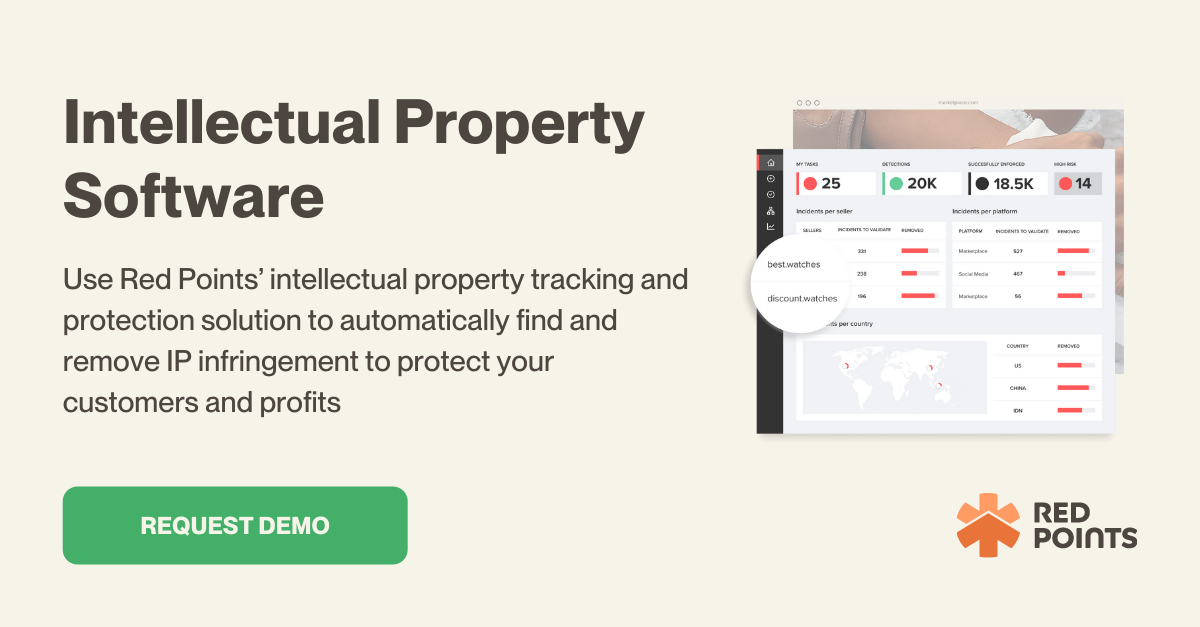The majority, if not all, of today’s businesses, own intellectual property assets, among other business assets, which makes it imperative for business owners to know how to properly safeguard these assets to maximize their commercial benefit and, more importantly, to protect their business, customers, and employees.
In today’s article, we will review what intellectual property rights are and their role in business operations, as well as what an effective intellectual property strategy is, and what intellectual property strategy development generally entails.
What is intellectual property and what does it protect?
Intellectual property (IP) is a classification of property that principally includes intangible creations of the mind. These are original works of human intellect, such as literary, artistic, or scientific creations as covered by copyrights, inventions and utility models as covered by patents, names and symbols used in commerce as covered by trademarks, and trade secrets.
When we speak of intellectual property rights, therefore, we are referring to the rights granted to persons or entities over the creations of their minds. What intellectual property law seeks to protect is the exclusive rights of such owner or creator over the use, distribution, and reproduction of his/her work for a certain period of time, the duration depending on what kind of creation is involved.
Why do I need an intellectual property strategy?
Traditionally, companies focus on their physical assets, such as equipment, infrastructure, machinery, and finances, in the safeguarding of business properties. It is important to note, however, that these tangible properties constitute just one category of business assets. Business assets also include intangible properties—brand identity, business data, software and programs, websites, databases, trade secrets, and so forth.
Certainly, these non-physical assets and creations need the same protection, too, if not more. This is rooted in the reality that today’s businesses derive most of their income not from physical assets, but from innovative ideas and technological creations, among other intangible assets.
An intellectual property strategy, precisely, works to protect this category of business assets. Simply put, an intellectual property strategy is a plan, made to align with the company’s business objectives, in order to protect its intellectual property assets and maximize the commercial benefits from such assets.
It cannot be denied, therefore, that an intellectual property strategy is now a necessity in building, maintaining, and protecting a business, its customers, and its people.

What are the elements of a successful intellectual property strategy?
A successful intellectual property plan for your business involves the following:
Protection
A successful intellectual property business strategy entails taking active steps in safeguarding your IP assets (filing the necessary paperwork, among other legal actions), including effective tracking and protection against intellectual property infringement.
Optimization
Your IP strategy should be able to optimize your business assets and business processes. This includes investing in the right tools, such as intellectual property software, to maximize your company’s IP assets, plans, and resources.
Monetization
While not a primary factor for all companies and business owners, a successful IP strategy should, still and all, improve the value of the organization. Apart from selling products or services faster with IP exclusionary rights, this also involves, at the least, building a better brand identity and reputation for your business and creating more business opportunities in the market.
How do I develop a successful intellectual property strategy for my company?
While there are no strict rules in intellectual property strategy development, the following are fundamentally your to-do’s in coming up with an IP strategy for your business:
1. Identify your intellectual property assets.
Of course, first and foremost, you will need to properly identify which of your business assets need intellectual property protection. Apart from making an enumeration, it is crucial that you are also first able to determine whether your intellectual property is not actually owned by someone else yet, as well as whether it is clear to your business developers and workers that certain IP assets, although technically products of their own intellect, are actually and legally owned by the company.
2. Align your IP strategy framework with your business objectives.
Another crucial step is understanding your business goals, particularly how they relate to your IP goals. To reiterate, an effective intellectual property strategy must go hand in hand with the company’s business objectives, so it is important that there is first a clear understanding of what your business intends to be and accomplish, to begin with.
3. Involve your people.
Your members, ideally, must also participate in the planning and execution process. They must be properly educated about what your company’s business objectives are, why your IP plans are relevant to such goals, how exactly you intend to implement your IP strategies, and how each member can actively and effectively contribute to achieving the desired result.
4. Be open to continually refining your IP strategy.
The work does not stop in executing your intellectual property strategy, nor, most certainly, in its mere development. Your IP strategy should evolve as your business strategy evolves. Your business position may change over time, and your IP assets may grow, too. Accordingly, you must remember to continuously develop and improve your IP framework to keep up with your business growth or reorganization.
What’s next?
This discussion on developing an intellectual property strategy for your business essentially highlights the importance of protecting your company’s intellectual property assets in order to maximize the commercial benefits from such IP assets.
This process need not be difficult and expensive on your end. For a cost-effective and hassle-free intellectual property tracking and protection approach, Red Points is here to help. Automatically find and remove IP infringement with Red Points’ Intellectual Property Protection software.






